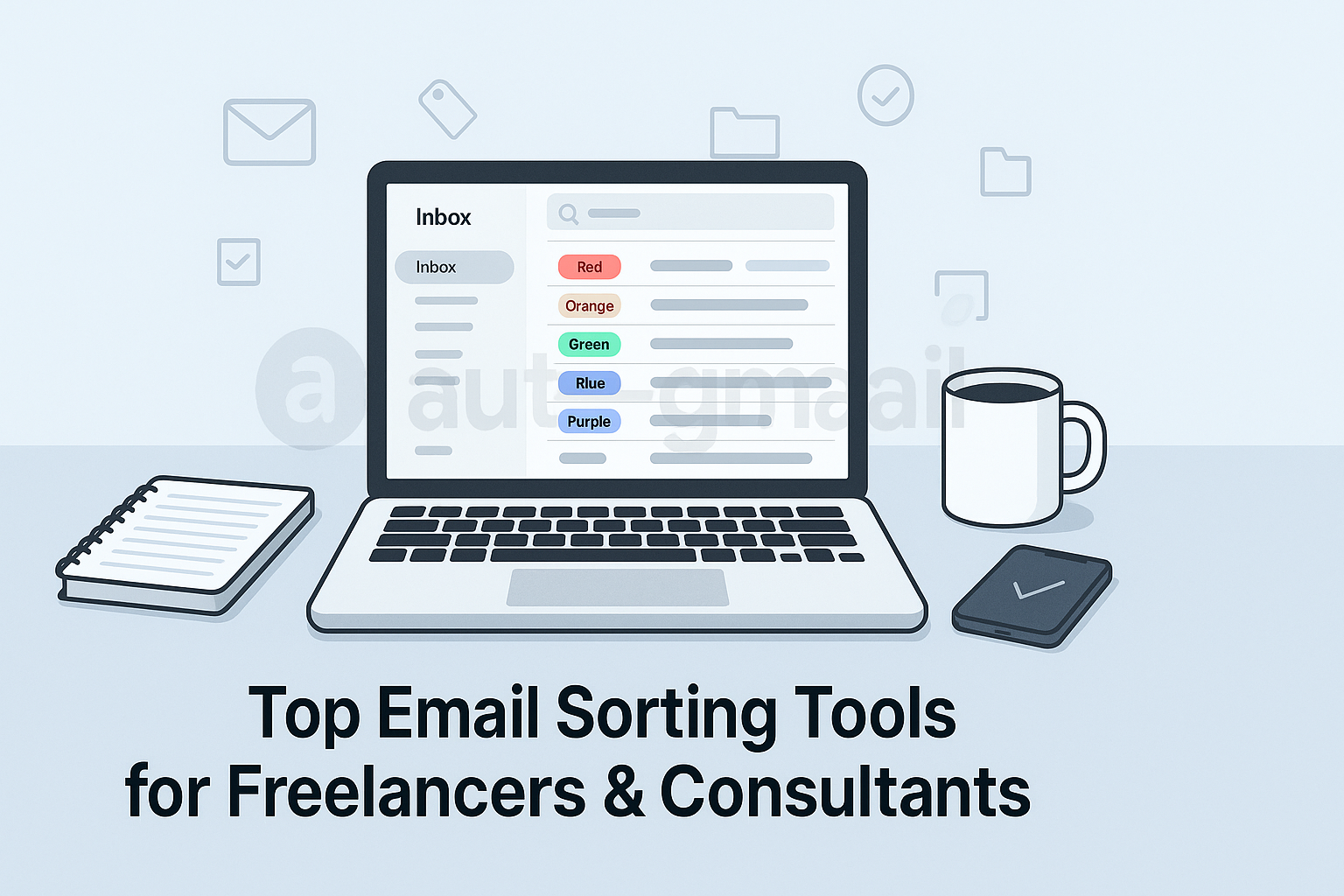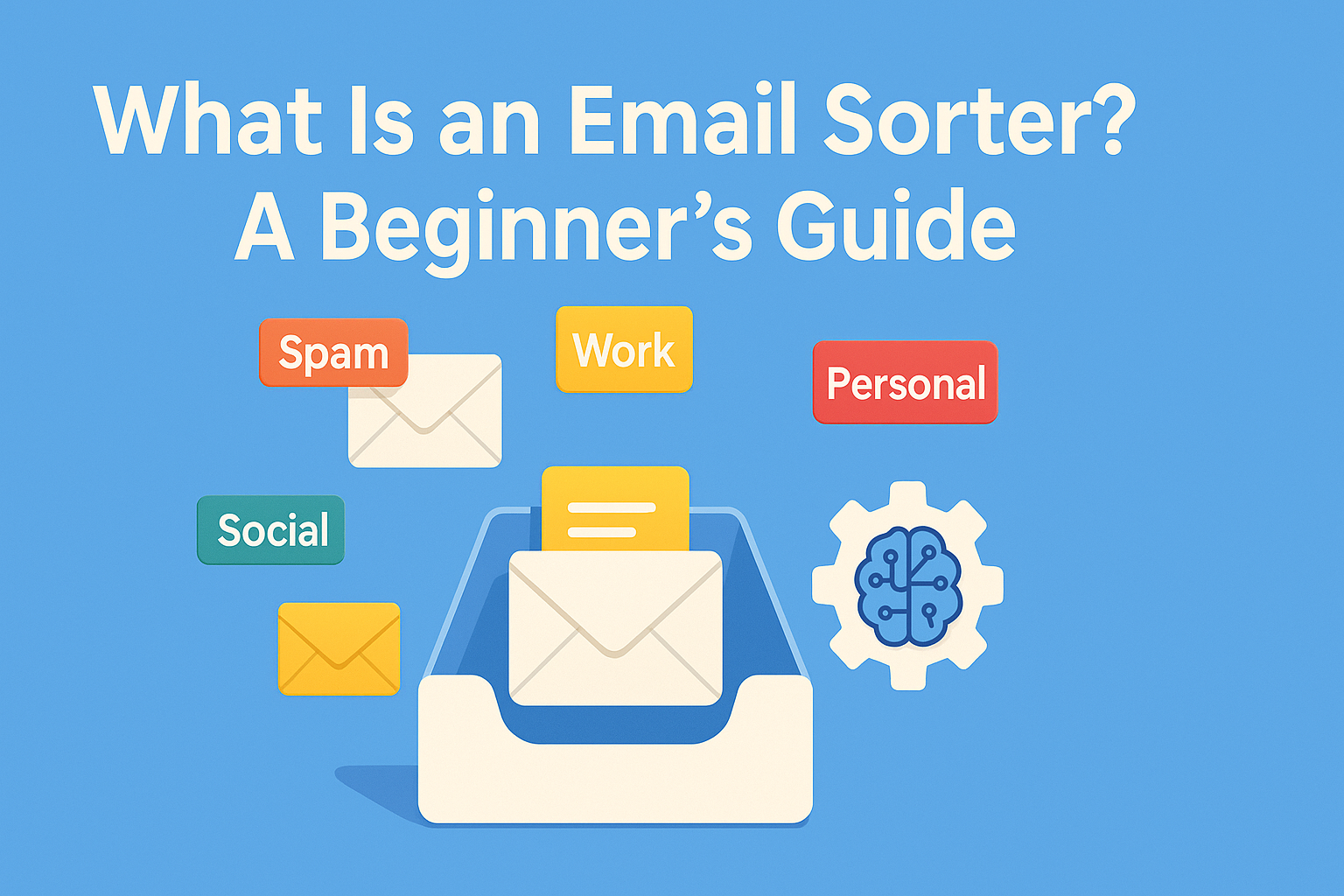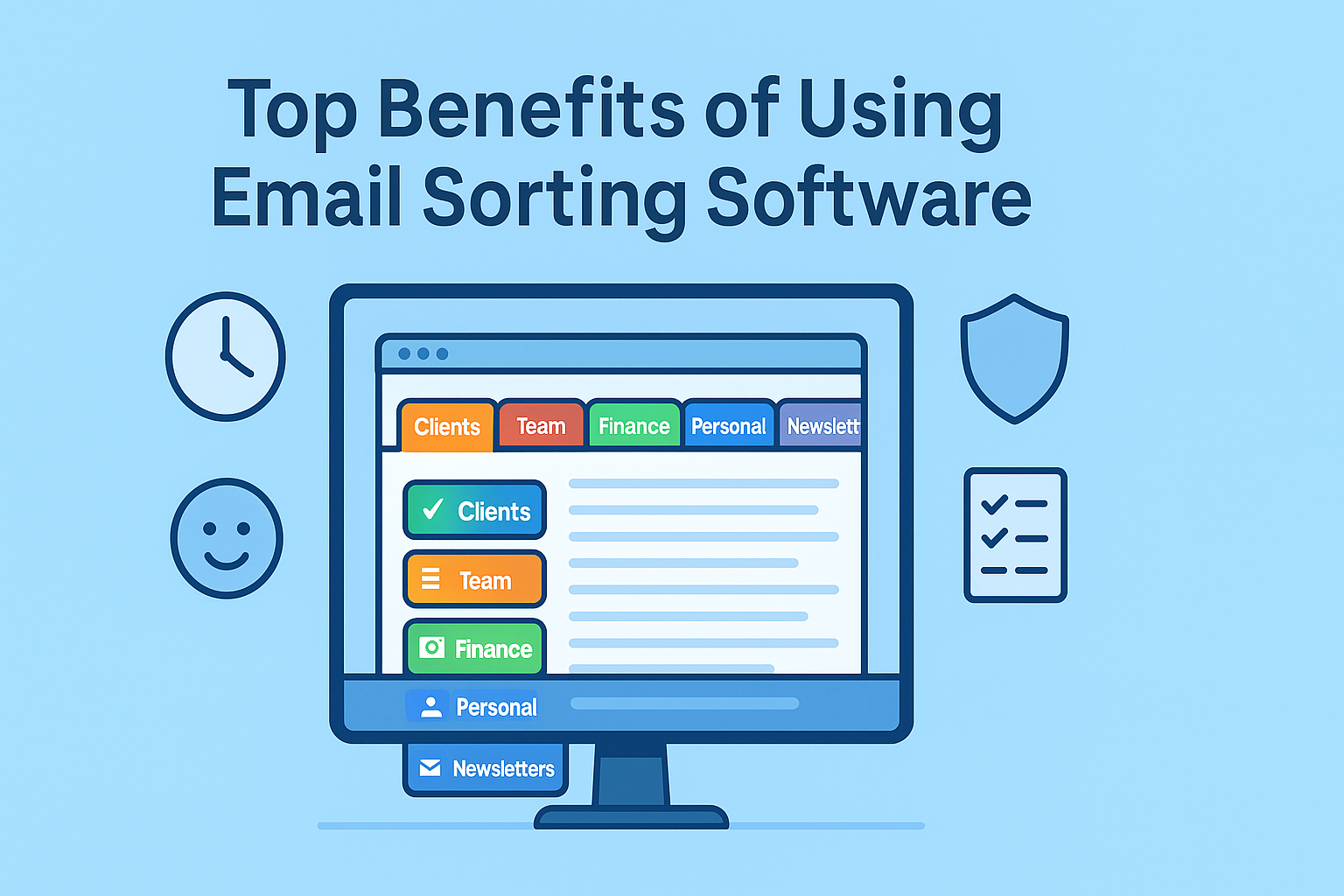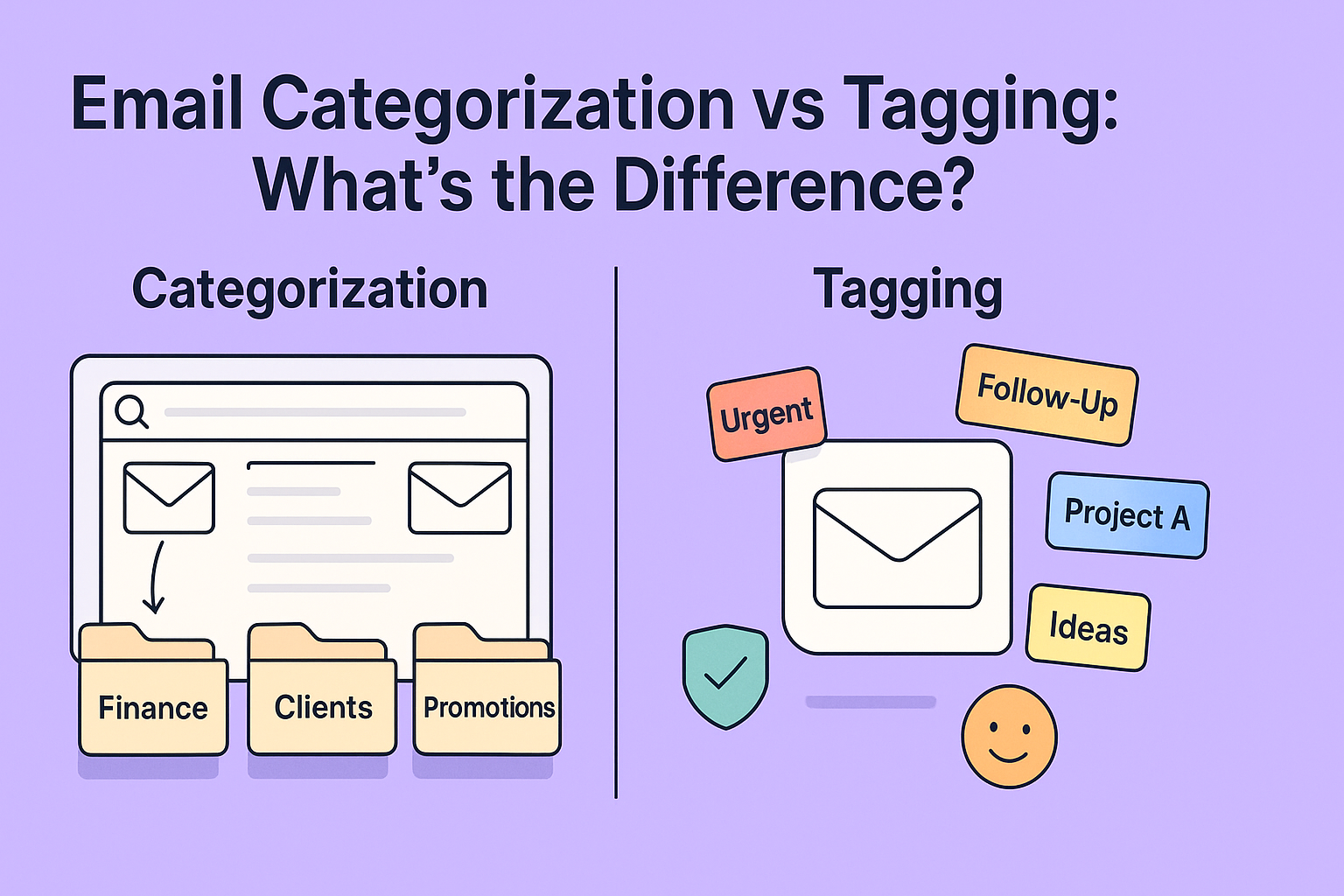Email sorting tools for freelancers and consultants aren’t just helpful, they’re game-changers. If you’ve ever missed a client email, lost a project update in a sea of promotions, or spent half your morning digging through your inbox, you’re not alone. That clutter isn’t just annoying, it’s costing you time, energy, and money.
Now imagine opening your inbox and instantly seeing what matters, client tasks, invoices, new leads, all neatly organized. That’s the power of the right tool. Whether you’re a solo freelancer juggling five clients or a growing consultant team needing real-time visibility, there’s a smarter way to manage email.
In this guide, we’ll break down exactly how these tools work, which ones are worth your time, and how to pick the one that fits your workflow, so you can get back to doing what you do best.
Why Email Sorting Matters for Freelancers and Consultants
There’s one universal truth for freelancers and consultants: email never stops. Whether it’s a client inquiry, an invoice confirmation, or a new project update, your inbox can become chaotic fast. When you’re wearing all the hats, sales, service, support, and admin, it’s easy to let email management slide. But a cluttered inbox isn’t just an organizational issue, it’s a silent productivity killer.
Missed emails can mean missed opportunities. Buried client updates can delay timelines. Duplicate tasks from redundant messages cost you time, which translates directly to lost revenue. Without a structured system, sorting through emails becomes a daily drain. Freelancers and consultants need more than basic folders, they need tools that work like virtual assistants, quietly filtering the noise while letting the signal shine through.
The truth is, inbox management is not just about decluttering; it’s about staying in control. And for independent workers who juggle multiple clients, maintaining a clean inbox can be the difference between a professional brand and a chaotic freelancer experience. A good sorting tool doesn’t just help you survive your inbox, it helps you own it.
Core Features to Look for in an Email Sorting Tool
Choosing the right email tool isn’t just about convenience; it’s about aligning with how you work. Freelancers need tools that don’t just look good on paper but actually handle the daily grind. One essential feature is automation. If you spend more than five minutes every morning sorting through updates, invoices, or newsletters, that’s five minutes too many. Rule-based sorting can automatically move client messages into project folders, archive newsletters, and flag anything that needs your attention.
Then there’s integration. Whether you use Trello, Asana, or even Google Calendar, a good email sorter should talk to your other apps. If your email tool can automatically create tasks or link messages to projects, you’re no longer juggling platforms—you’re streamlining.
And don’t overlook mobile access. You’re not always at your desk, and when you’re out meeting clients or working from a coffee shop, your tool should work just as well on your phone. Syncing between devices isn’t a nice-to-have anymore; it’s a necessity. Real-time access to sorted emails keeps you responsive and on top of everything, no matter where you are.
Criteria for Selecting the Right Tool for Freelancers
As a solo professional, every tool you choose has to earn its place. That means being honest about what you actually need—and what you’re willing to pay for. Budget is usually a concern, but so is wasting time on a free tool that doesn’t deliver. The best email sorters for freelancers offer tiered pricing, so you can start small and upgrade only if you really need to.
Customization matters, too. Your workflow isn’t like anyone else’s. Maybe you work in sprints, or maybe you check emails twice a day. Either way, your tool should bend to fit your habits—not the other way around. Look for customizable folders, filters, and even smart tagging that learns your preferences over time.
Security is another big deal. Freelancers often handle sensitive client data, from contracts to payment details. Make sure your email sorting tool follows solid encryption protocols and doesn’t sell your data. This isn’t just about protecting your inbox—it’s about protecting your reputation.
Best Email Sorting Tools for Solo Use
Some tools just work better for one-person operations. SaneBox is a favorite among freelancers because it’s almost invisible. It works with your existing inbox, adds folders like “SaneLater” and “SaneNews,” and learns from how you interact with your emails. It’s not flashy, but it gets smarter the more you use it.
Then there’s Clean Email, which shines in its simplicity. It doesn’t overwhelm you with features. Instead, it offers clear batch actions, automatic filters, and easy unsubscribe options. It’s great for people who want results fast without reading a manual first.
If you’re dealing with a backlog of thousands of unread emails, Mailstrom is the cleanup crew you need. It lets you group messages by sender, subject, or time, making mass deletion and archiving much easier. It’s not a long-term automation tool like SaneBox, but it’s perfect for getting back to inbox zero.
Collaboration-Oriented Email Tools for Consultants
If you’re a consultant working with teams or clients who need real-time visibility, email collaboration becomes just as important as sorting. Front is a standout here. It lets multiple users manage a shared inbox, assign messages, and comment internally—no more messy CC threads or endless forwards. It brings transparency and accountability to email, which is especially helpful if you’re part of a client’s external team.
Spike offers a different twist—it turns emails into chat-style threads. It strips away the formalities, making communication faster. It’s great for fast-paced projects where quick replies matter. You can still sort and categorize messages, but the experience feels more like texting, which reduces mental fatigue during long email sessions.
Tools That Scale as Your Business Grows
Freelancers often start solo but rarely stay that way. As you gain more clients, expand your services, or collaborate with subcontractors, your once-simple workflow becomes a bit more complex. That’s when scalability becomes a real concern—not just for your project tools, but also for your email management system.
A great email sorting tool should support you at every stage, from individual contributor to team lead. Some tools, like SaneBox, offer team plans that allow group-wide email management while keeping things simple for the solo user. Others, like Front, are built for scalability from the ground up, allowing you to add users, assign conversations, and centralize communication as your business grows.
This is where it makes sense to think about how email sorters support small business operations. When freelancers transition to managing small teams, they often need to revisit their email workflows. Solutions that once served a single inbox might not cut it when two or three people need shared access, unified labels, or email accountability. For those scenarios, email sorters for small businesses offer a better long-term fit. These tools are built with collaboration in mind, giving you shared folders, delegated access, and even analytics to track response times and workloads—features you may not need now, but definitely will later.
The point is: choose tools that grow with you. Start with solo-friendly automation, but keep an eye on how those tools perform at scale. You don’t want to switch platforms mid-growth because your inbox can’t keep up.
Email Sorting for Industry-Specific Freelancers
Not every freelancer handles email the same way. A freelance writer doesn’t use their inbox like a real estate consultant. That’s why industry context matters when choosing the right sorting tool. For example, writers and editors may benefit from tools that allow tagging by publication, pitch, or editorial deadline. Clean Email works well here, it allows flexible tagging and easy archiving once a piece is submitted.
Designers, on the other hand, might focus on visual communication and file sharing. Spike’s chat-like UI and file preview options make email feel more like Slack—great for fast approvals and design feedback. If your clients tend to reply casually or from mobile devices, this kind of format feels more natural and efficient.
And for industries where email speed can make or break a deal—like real estate—the right sorting tool becomes crucial. Agents need to respond to leads quickly, keep track of documents, and coordinate with clients across multiple properties. In those cases, choosing the right tool isn’t optional—it’s a requirement. That’s why it’s worth looking into email sorters for real estate. These are tailored to handle large volumes of client interactions, automate follow-ups, and keep listings organized without letting anything fall through the cracks.
If your industry has specific timing, privacy, or workflow needs, don’t settle for generic tools. Pick something tailored—or at least customizable enough to match your niche.
Cloud-Based Tools for Freelancers on the Go
You’re not always at your desk. That’s part of the beauty of freelancing, working from wherever makes sense for the day. But it also means your email solution needs to be just as mobile as you are. If you’re switching between laptop, tablet, and phone, a locally-installed tool won’t cut it. You need cloud-based solutions that keep everything synced, secure, and accessible, without lag.
This is where cloud-based email sorters make all the difference. They operate entirely online, with real-time updates and device-agnostic access. Whether you’re in a coworking space in Berlin or checking your phone in between meetings, your sorted inbox stays just the way you left it.
Apps like Clean Email and SaneBox both work across devices with seamless syncing. And because they integrate with Gmail, Outlook, or iCloud, you’re not tied down to one platform. Some even offer browser extensions or mobile-specific layouts that make managing folders and filters easy on a small screen.
For consultants and freelancers who spend a lot of time on the road, traveling to clients or bouncing between locations, this kind of mobility isn’t a luxury—it’s the baseline for staying professional. You don’t want to be the person who says, “Sorry, I missed your message, I wasn’t at my laptop.” The right tool makes that excuse obsolete.
Mistakes to Avoid When Choosing an Email Tool
Picking an email sorter isn’t about grabbing the one with the most bells and whistles. It’s about finding the one that solves your exact problem. One common mistake? Overpaying for features you’ll never use. It’s easy to be dazzled by advanced AI, analytics, or integrations you don’t need. If you’re only managing three to five clients, you don’t need enterprise-level features. Focus on basics like automation, tagging, and filtering—those are what will save you the most time.
Another trap is ignoring mobile functionality. Freelancers often start with desktop-based tools and assume they’ll “figure out mobile later.” But if your tool doesn’t sync well, or if the mobile UI is clunky, you’ll end up frustrated and miss important messages while on the move.
Also, don’t skimp on privacy settings. Some tools scan your inbox to build their models. Make sure you read the fine print. If you’re dealing with confidential client communications, you need a tool that respects privacy—not one that uses your data to feed ads.
The last major misstep? Not testing. Most email sorting tools offer a free trial. Use it. See how it fits your daily routine. If it feels clunky or adds friction, it’s not the right one—no matter how many five-star reviews it has.
How to Transition to a New Email Sorting Tool
Switching email tools might sound intimidating, especially if you’ve been using your inbox as-is for years. But the transition doesn’t have to be painful—if you take a step-by-step approach. The first thing to do is declutter before you integrate. Go through your existing inbox and archive or delete messages you no longer need. This is like prepping a room before moving in new furniture—you want a clean slate so your new system can shine.
Next, make a short list of the kinds of emails you get daily. Think client updates, newsletters, invoices, notifications. This will help you set up effective rules or filters in your new tool. Most email sorting platforms let you create custom folders and filtering rules. Start with just a few essential ones—maybe a folder for each client or project—and expand as needed. Don’t overcomplicate it right away.
Also, give yourself time to adjust. Try running your new sorting tool alongside your current system for a week or two. Let it learn from your habits and give yourself the chance to refine the settings. If something feels off, tweak it. The best tools get better the more you interact with them.
Finally, remember that automation doesn’t mean hands-off forever. Check in on your sorted folders regularly to make sure the system is working as expected. A quick review once a week can keep things on track and prevent important messages from being misfiled.
Productivity Benefits Beyond the Inbox
Email sorting tools aren’t just about inbox organization—they can be powerful time-savers that free up mental space for more creative or strategic work. When your inbox works behind the scenes to categorize, prioritize, and even snooze messages, you’re not spending 30 minutes sorting before you even get started. That’s time you can put toward writing proposals, completing client work, or just taking a much-needed break.
And let’s not forget the mental health angle. A chaotic inbox is stressful. That little number in the thousands—unread emails—can feel like a weight. A cleaner inbox means less anxiety and a better handle on your day. You’re not reacting to every ping; you’re working from a plan.
These tools also help reduce decision fatigue. You no longer have to ask yourself, “Should I answer this now or later?” because the tool has already flagged high-priority messages for you. You get to work on what matters most, when it matters.
So while the upfront setup might take a bit of time, the long-term payoff is huge. More clarity. More control. And more time for the stuff that actually moves your business forward.
Real Experiences from Freelancers and Consultants
You don’t have to take a tech expert’s word for it—plenty of freelancers swear by their email tools after struggling for years without one. Jess, a freelance brand strategist, said that switching to Clean Email helped her stop missing client messages buried under promo emails. “I thought I was just bad at email,” she said. “Turns out, I just needed a system.”
Meanwhile, Marco, a digital consultant who often collaborates with agency partners, swears by Front. “It took a few days to learn, but now my clients and I can all see the same thread without CC hell. It saves me hours every week.”
Stories like these prove that the benefits aren’t theoretical—they’re real. Whether it’s reducing stress, improving responsiveness, or helping teams stay on the same page, a good sorting tool can genuinely improve the way you work. And that’s exactly what these tools should be doing—making your day smoother, not more complicated.
Final Thoughts
There’s no one-size-fits-all answer here. The best email sorting tool for you depends on how you work, what kind of clients you manage, and whether you’re flying solo or starting to scale. Don’t chase features—chase results. Pick a tool that saves you time, simplifies your routine, and leaves room to grow.
If you’re just starting out, go for simplicity and ease of use. If you’re scaling or managing teams, choose tools that offer collaboration and shared visibility. And no matter what, pick something that feels natural—something that fits into your workflow, not something that forces you to change everything just to keep up.
At the end of the day, email is just a tool—but with the right sorting system, it becomes a strength instead of a stressor.
Frequently Asked Questions
What is the best free email sorting tool for freelancers?
If you’re looking for a free option, Clean Email offers limited but highly functional features on its free tier. Gmail’s built-in filters also offer basic sorting capabilities with zero cost.
Can I use multiple tools at once?
Yes, many freelancers use a combination—like pairing Gmail’s filters with an overlay tool like SaneBox or Mailstrom. Just make sure the tools don’t conflict with each other’s settings.
How do I keep client emails prioritized?
Set up filters that route emails from client addresses into labeled folders or tag them with priority markers. Some tools even let you color-code by client or deadline.
Are there industry-specific tools for email sorting?
Absolutely. Real estate professionals, for instance, benefit from email sorters for real estate due to high-volume, time-sensitive communication needs.
What happens to my sorted emails if I switch platforms?
Most cloud-based tools store sorting rules separately, so if you switch, you’ll likely need to reset filters. However, folders and tags generally remain intact if you’re staying within Gmail or Outlook ecosystems.




